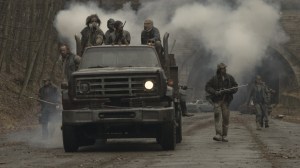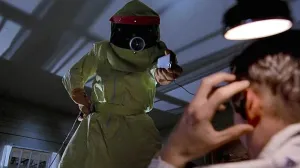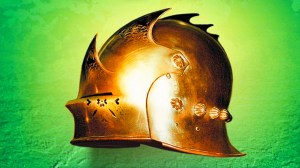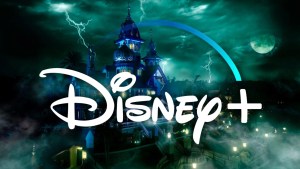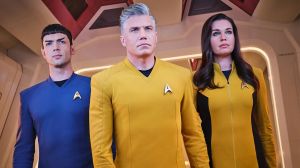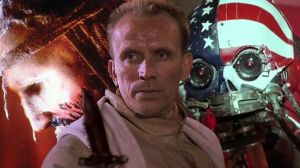March 12, 2017 — that’s this coming Sunday — marks 20 years since the release of Superman #123 by writer Dan Jurgens and artist Ron Frenz, and ComicBook.com is going to spend some time this week and weekend looking back on the issue, the status quo it inspired, and what it meant for the character and the creators involved.
Videos by ComicBook.com

The tale introduced the “Electric Superman” costume — a blue suit designed by Frenz, which Superman: The Man of Steel artist Jon Bogdanove used to joke reminded him of a speed skater’s singlet — along with a new set of powers for the Man of Steel.
(You can hear an interview with Bogdanove about the Electric Superman era on the Panel Discussions podcast.)
Superman #123, which debuted the suit and was the culmination of a mini-arc teasing Superman’s new powers, was titled “Superman — Reborn!,” a title that rings a little ironic given that twenty years later — almost to the day — there’s a story called “Superman Reborn” running through the two Superman titles, one of which (Action Comics) is written by Superman #123’s Jurgens.
And while it didn’t have the longevity (or even the sales at the time) of something like the Death and Return of Superman story from five years earlier, the “Superman Transformed” storyline (as it came to be known in trade paperback collections) is one that fans still talk about — sometimes with fondness, and sometimes as a cautionary tale — to this day. When The New 52 happened, for instance, fans grilled Jurgens at a Superman panel at New York Comic Con, asking why they ought to believe that the younger, armored Superman would remain the status quo and not fade away after a year or two like the Electric version did.
“We were always looking for big stories to do with Superman and those usually involved the idea of changing up the status quo in some way,” Jurgens said of the concept’s genesis. “We had discussed the general idea of a costume change even back when we brought him back from the dead, of course. That was part of the inspiration for the all black costume. So we kind of revived some of that here and also went with a change in powers, which we’d also talked about previously.”
Both the black costume — seen during “The Reign of the Supermen” — and the Electric Blue look place over a fairly short amount of time, but has translated to numerous action figures and other merchandise. Both versions have also been revisited or teased during multiverse stories and the like, and the “electric” look currently has a variation in the form of Lana Lang’s costume in Superwoman.

The idea for the 1997 costume and power change came out of the desire to riff on a Silver Age story, “Superman Red/Superman Blue,” in which the Man of Steel was separated into two separate beings, each of whom had Superman’s powers but a costume that was more monochromatic (except the “S” shield).
“Over the years, we talked several times about doing ‘Superman Red/Superman Blue’ somehow,” Jurgens said. “Our colorist, Glenn Whitmore, had always been nudging us to do so! In this case, we finally had a story where it would actually fit.”
And the story, while there were elements he says he would change, is one that he’s overall reasonably happy with. That said, with twenty years of hindsight there are of course a few things that an older, wiser Jurgens might have lobbied to change.
“I’d say it got a bit unwieldy there for a time,” Jurgens said of the story, which ran for about a year and which Big stories like that really need to have a certain amount of control exerted over them and we didn’t quite have that here. It was probably too big and the focus drifted a bit too much.”
“Smaller, better delineated chapters would have helped he entire approach,” he added. “I think I’d also try to clean up the ending a bit. The entire ‘Death of…’ through ‘Return of…’ was focused and linear. That’s really hard to do but if we had more of that here, we’d probably have been better off. That’s not to say I’d change anything as much as I’d tighten it up.”
Jurgens says that while the short-term impact of the story was undeniable — the early issues wildly outperformed expectations, and everyone was talking about it — it seems to have gone dormant for a while before making a recent resurgence. Some of that short-term impact may have been hype: a Wizard magazine cover as well as a glow-in-the-dark direct market cover for Superman #123 likely led some casual fans who hadn’t checked into the Superman books in a while to try it out. Some was likely lapsed readers or casual readers giving it a try since most of the Superman creative teams had remained largely unchanged for four years, meaning that the last time a status quo change from these teams had come up on this character, it was the massive bestsellers in the death-and-rebirth story.
The writer/artist, who has famously said he never goes to a convention where he doesn’t get at least a handful of “The Death of Superman” issues to sign, told ComicBook.com, “Over the last few years, I’ve seen revived interest in ‘Superman Transformed,’ just as I have with the Ben Reilly Spider-Man stuff. I get a lot more questions, comments and issues of both to sign these days.”
Check back for more from our look back at Superman Transformed throughout the week, and see some of our coverage of Jurgens’s current run on Action Comics below.
You can check out Action Comics #975 at your local comic shop or pick up a digital copy here.
More Superman News:

